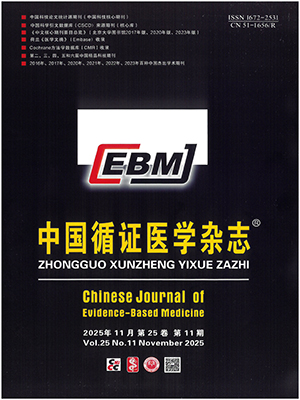Objective To systematically review the effect and safety of bevacizumab as salvage treatment for Her-2 negative recurrent or metastatic breast cancer.
Methods The stage III randomized controlled trials (RCTs) on chemotherapy plus bevacizumab vs. chemotherapy alone for Her-2 negative recurrent or metastatic breast cancer were collected from PubMed, EMbase, The Cochrane Library, SCI citation database and CBM. Conference abstracts in ASCO and ESMO during last three years, NCCN guideline (2012), as well as relevant Chinese journals were also retrieved manually. The retrieved literature was published from the inception of databases to February 2012. Two reviewers independently screened the literature according to inclusion and exclusion criteria, evaluated and cross-checked methodological quality, and resolved discrepancy by discussion or according to expert opinion. Then meta-analysis was conducted using STATA SE 12.0 software.
Results Of 132 articles collected, a total of 4 RCTs involving 3 131 patients were included. The results of meta-analyses showed that: compared with chemotherapy alone, bevacizumab plus chemotherapy could improve the progression-free survival (PFS) for patients with Her-2 negative breast cancer (HR=0.67, 95%CI 0.57 to 0.79, P=0.001), but it could not prolong the overall survival (OS) (HR=0.92, 95%CI 0.82 to 1.02, P=0.121). Adverse effects such as hypertension, proteinuria and bleeding significantly increased in the bevacizumab group, but no statistical significance was found in thrombo-embolic event, neutropenia and sensory neuropathy between the two groups.
Conclusion Bevacizumab can improve PFS rather than OS for patients with Her-2 negative recurrent or metastatic breast cancer, and it increases the Grade 3 to 4 adverse effects. It is necessary to identify the best indications of bevacizumab as salvage treatment for breast cancer.
Citation: XU Long,ZHANG Guojing,XIE Xiaodong. Bevacizumab as Salvage Treatment for Her-2 Negative Breast Cancer: A Systematic Review. Chinese Journal of Evidence-Based Medicine, 2012, 12(11): 1347-1353. doi: 10.7507/1672-2531.20120210 Copy
Copyright ? the editorial department of Chinese Journal of Evidence-Based Medicine of West China Medical Publisher. All rights reserved




